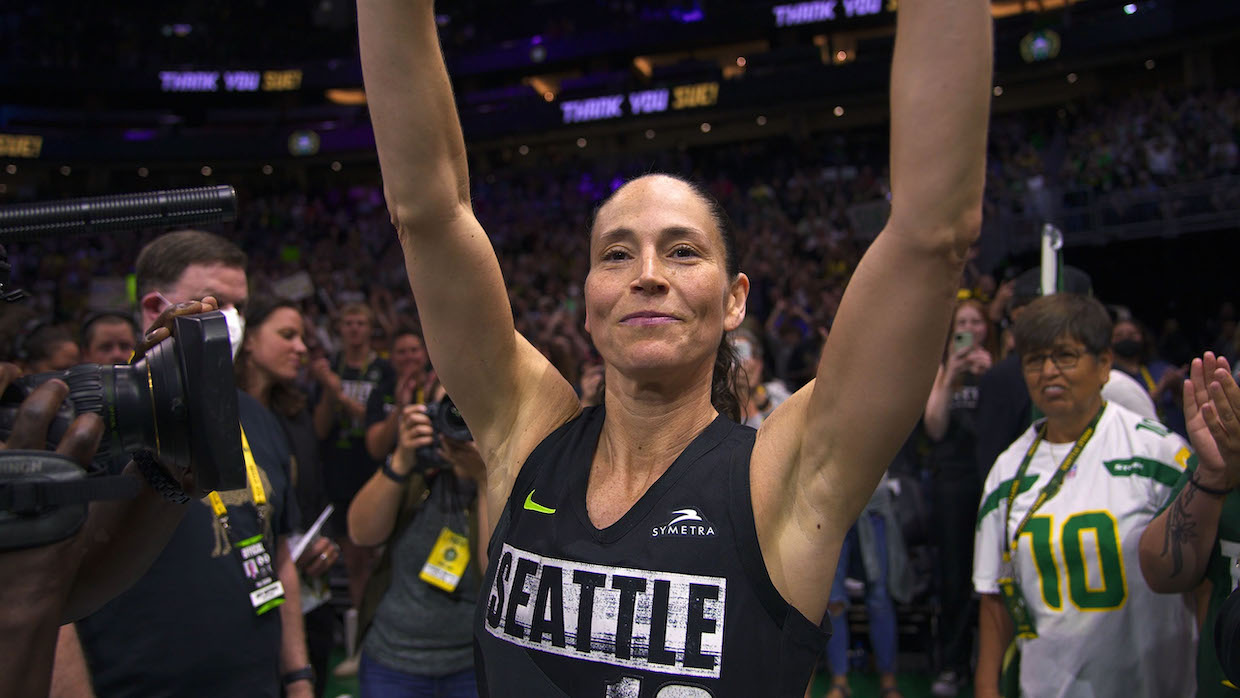 Back to selection
Back to selection
“The Sonic Experience of a Live Basketball Game Is Electrifying” | Sarah Dowland, Sue Bird: In the Clutch
 Sue Bird: In The Clutch, courtesy of Sundance Institute.
Sue Bird: In The Clutch, courtesy of Sundance Institute. Films are made of and from places: the locations they are filmed in, the settings they are meant to evoke, the geographies where they are imagined and worked on. What place tells its own story about your film, whether a particularly challenging location that required production ingenuity or a map reference that inspired you personally, politically or creatively?
If watching our film was a 4D experience, I’d pump the smell of popcorn into the theater!
As a pro basketball player Sue’s world was sports arenas across the country where the smell of popcorn was always lingering.
I loved having access to the back-of-house and being courtside for Sue’s games. It allowed us to capture it the way Sue experiences it as a player. It also gave us a window into the workings and staging of a sports event, from catering and cleaning to security and media. Everyone, including the players, has a job to do to deliver the product to the fans.
The sonic experience of a live basketball game is electrifying, especially when it’s a close contest or a high stakes game like a playoff. The booming voice of the announcer, the constant music, the squeak of the players’ shoes, the bounce of the ball, half-time entertainment and cheering fans, make for a fun but challenging environment for the sound recordist! During a game, the sound recordist could not be with the cinematographer because of space restrictions on the court. We leaned into the situation by placing microphones around the arena so that we could build the atmosphere in sound layers if we needed to in post. It also gave us some wild SFX.
Like most elite sports, basketball is a TV broadcast, podcast and print sport. Everyone has a designated place they are allowed to be based on their affiliation. As large as the arenas are, space for a documentary crew is limited. We often filmed at the warmups before the game because it was the only time we could roam with the camera. As we always needed to be mindful of the players and coaches, we carried a variety of lenses so we could adapt on the fly. During the game our cinematographer had to sit on the court in a tiny little box that was mapped out with tape on the floor. If it was a Seattle Storm (Sue’s team) home game, then we would get the spot closest to the bench. That was the best for capturing Sue during a time-out and when she came off for a rest. It’s physically demanding to be holding a camera rig for a whole game while ensuring that your equipment and limbs stay within the box, so players or refs don’t trip over you. Did I mention keeping one eye on the play as well in case the ball or a player comes flying towards you?! It’s more common than you think.
Even though it’s summertime when the women play, the arenas are freezing. We wore winter coats even when it was 80 degrees Fahrenheit outside. The temperature is set in anticipation of the arena being full of fans, but typically we would arrive early to film Sue warming up and the place was empty.
When a team is on the road, players must be transported via bus to the arena. In Phoenix, Arizona, Sue’s hotel was literally across the street from the arena. It would have been faster to walk but the team had to take the bus. We found out after walking our gear over to the arena that there was a practical reason for taking the bus. It was over 100 degrees Fahrenheit! And if you’re a pro baseball player about to pour everything you have trained for into a game, wasting energy and sweat, even small amounts, would be a bad idea!
See all responses to our annual Sundance Question here.
